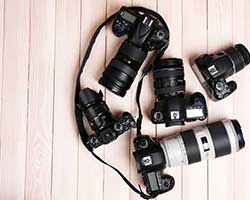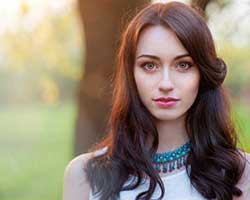Here's a mistake I see bloggers and online shop owners make all the time: You've just completed a product or project you want to feature in your online space. You need a good photo. So you start looking around in that moment for a place to shoot it. But perhaps it's the middle of the night, or it's a grey, cloudy day. In your excitement, you snap the shot anyway, using whatever light is at hand. And the resulting photo, sadly, doesn't do your work any justice.
If you need to produce good photography on a regular basis, and you'd rather not invest in studio lighting, then it really pays to get acquainted with your sunlight resources. If you know where your best light is, and at what time of day, you can plan your photography ahead to get the best possible shots.
Using a Sunlight Tracker
To get a sense of your available sunlight, set aside a day when you can make an hourly observation of the space where you shoot most often, whether it's indoors or out. Use the Sunlight Tracker Worksheet (PDF download) to record what you see. Make note of the times of day you have good available light in your space, and where that light occurs.
The best sunlight for most blog and online shop photography is bright, diffused sunlight. Strong, unfiltered sunlight tends to create harsh shadows in photographs, but if that's the light you have available, you can always make a simple diffuser by taping white tissue paper to the nearest window.
If you'd rather not fill out a worksheet, you can do your light-tracking as I've done above — with photographs. Set up a simple shot in the location where you do most of your photography, using the set-up you normally use. (I use a light tent, but you might normally use a tabletop. Any set-up works well for this test.) Then get a stack of index cards. Take a shot every hour or so throughout the day, and each time, write the time of day on an index card and include it in the shot. It should be easy to see which shots look best, and that tells you what times of day are optimal for you.
Barriers to Good Light
When you rely on natural sunlight for photography, you do have to work around any natural barriers in your environment. Surrounding buildings and trees will cast shadows at specific times of day. Another kind of sunlight tracking you can do is to simply watch, hour by hour, when these barriers start affecting your available light, and then look around for alternate locations that are getting better light at these times.
Light Goes Through Seasonal Changes
Depending on where you live, the quality and timing of your light may change significantly during the year. For example, I live along the 45th parallel. During the summer months, I have great photo light between 11:00 am and 1:30 pm. In the middle of winter, however, optimal light happens only between 10:30 am and 11:30 am. Looking at the photos above, you can also see that my winter light is somewhat weaker than my summer light.
The closer you are to the equator, the less variation you're likely to see between seasons. But even so, it doesn't hurt to do a Sunlight Tracker every six months or so, just to see the differences.
Bonus: You can learn how to become a photographer with a photography course from NYIP! Enroll today.






